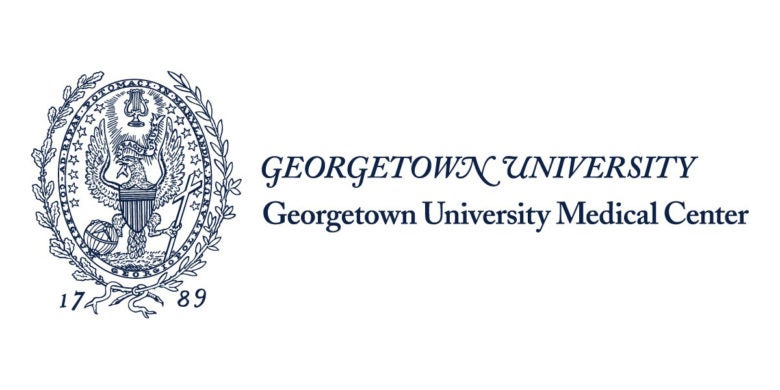Opioid Gene Variant in Adolescents Reduces Reward, May Increase Later Substance Abuse Risk

Posted in News Release | Tagged addiction research, biomedical research, brain
MEDIA CONTACT
Karen Teber
km463@georgetown.edu
SAN DIEGO (November 5, 2018) — Adolescents with a particular variant of an opioid receptor gene have less response in a part of the prefrontal cortex that evaluates rewards, compared to those with the other version of the gene, say researchers at Georgetown University Medical Center (GUMC).
For the study, presented Monday at Neuroscience 2018, the annual meeting of the Society for Neuroscience (abstract #7517), the investigators scanned adolescents who have never used drugs or alcohol with functional magnetic resonance imaging (fMRI) while they played a simplified “gambling” game. In some participants, researchers found a muted reward response when the participants were shown when they won, versus lost, a small amount of money.
These results suggest that adolescents with a particular variant of an opioid receptor may be more vulnerable to substance abuse in later years, says the study’s senior investigator, John VanMeter, PhD, director of the Center for Functional and Molecular Imaging at GUMC, and an associate professor of neurology.
A possible reason this gene may confer risk is that the diminished response to rewards may compel an individual to overindulge to achieve the same level of pleasure others without the gene variant do, VanMeter says. “Combined with the fact the prefrontal cortex is still developing in adolescence, this may lead to an increased risk for future substance use problems.”
The gene in question is the G variant (or allele) of opioid receptor mu (OPRM1). In the brain mu-opioid receptors respond to both internal (e.g., endorphins — such as “runner’s high”) and external opioids (e.g., morphine and oxycontin used for pain management). The reason the researchers chose to investigate this gene is because a number of studies have linked it to substance abuse. For example, it is more commonly found in adult heroin addicts, and adolescents who have an alcohol use disorder were more than three times likely to have the G-variant, say the researchers.
Adolescents are believed to be at increased risk of misusing drugs because of the differing rates at which parts of their brains develop. By adolescence, the brain’s reward area, the striatum and other parts of the limbic system, is fully developed, but the frontal cortex, an area involved in decision-making — evaluating whether the reward is worth the risk — is not fully matured until early adulthood. This difference means the evaluation of risks versus rewards performed by the frontal cortex is not fully engaged in adolescence.
“The fact that the prefrontal cortex is not fully developed means this is a developmental window and, as such, the use of drugs and alcohol during this period may unalterably inhibit the development of this key part of the brain,” says VanMeter.
“Genes are thought to contribute to susceptibility of substance abuse disorders, along with other factors such as family history, poverty and use among friends,” says lead author Veronica C. Mucciarone, a research assistant in VanMeter’s lab. “The benefit of this study is that our results suggest that OPRM1 genotype influences the way the brain processes reward before exposure to drugs and alcohol, which is important because this allows us to examine how the gene affects their brains prior to being altered by substance use.”
Researchers explored the effects of the G variation in early adolescence, before the participants began using substances. They scanned 115 adolescents, ages 11-13, using fMRI while they played a research-based computerized gambling game. In the game, participants made either risky choices (low odds of winning) or safe choices (high odds of winning), after which they were shown whether they won or lost money.
The study also analyzed self-reported family history of alcohol use/abuse, and while that parental survey found no significant difference between carriers of the OPRM1 G allele and other alleles, a significant number of participants who carried the G allele reported that they believed their parents drank more alcohol than did the other group of participants.
“Taken together, results showing a heightened awareness of parental alcohol consumption and decreased brain response to reward suggest G-allele carriers may be at increased risk for substance use disorders,” says Mucciarone.
VanMeter added, “This indicates that these adolescents have an altered reward system that we should pay attention to, and design prevention strategies to help these children.”
This work is supported by a grant from the National Institute for Alcohol Abuse and Alcoholism (1R01AA01998301)
Additional authors include research assistant Rachel Schroeder and Benson W. Stevens, PhD, of Georgetown; and Diana Fishbein, PhD, of The Pennsylvania State University.
About Georgetown University Medical Center
Georgetown University Medical Center (GUMC) is an internationally recognized academic medical center with a three-part mission of research, teaching and patient care (through MedStar Health). GUMC’s mission is carried out with a strong emphasis on public service and a dedication to the Catholic, Jesuit principle of cura personalis — or “care of the whole person.” The Medical Center includes the School of Medicine and the School of Nursing & Health Studies, both nationally ranked; Georgetown Lombardi Comprehensive Cancer Center, designated as a comprehensive cancer center by the National Cancer Institute; and the Biomedical Graduate Research Organization, which accounts for the majority of externally funded research at GUMC including a Clinical and Translational Science Award from the National Institutes of Health. Connect with GUMC on Facebook (Facebook.com/GUMCUpdate) and Twitter (@gumedcenter). Connect with Georgetown University School of Medicine on Facebook (Facebook.com/somgeorgetown), Twitter (@gumedicine) and Instagram (@GeorgetownMedicine).
